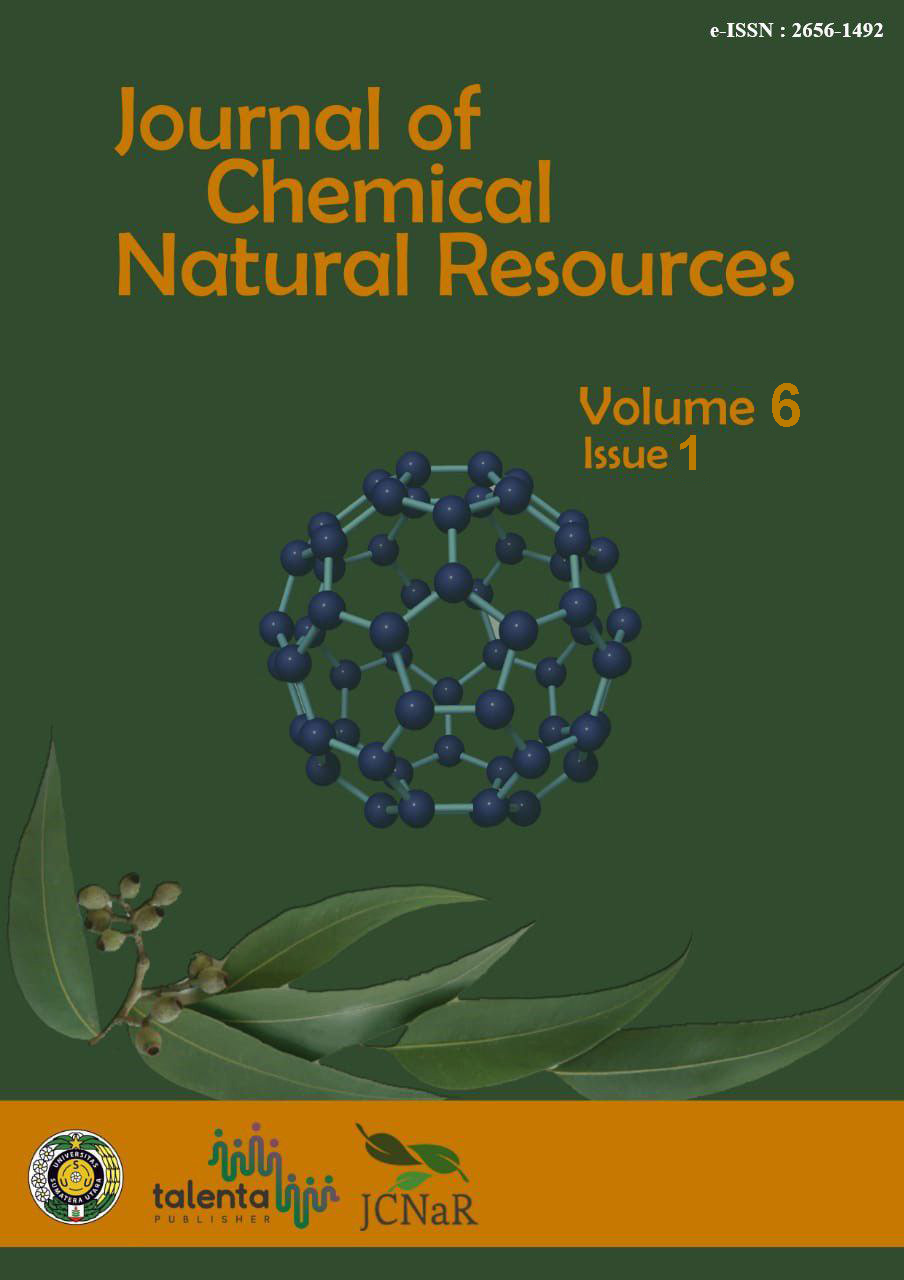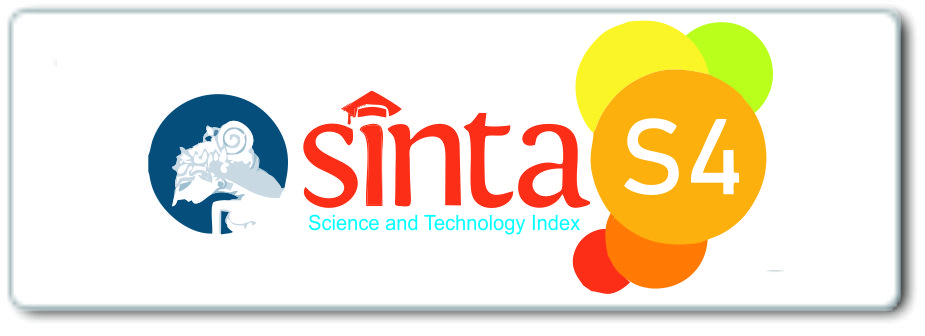Reduction of Metal Density of Iron (Fe) and Copper (Cu) Using Corn Active Archarge and Commercial Active Archarge on Water from a Bali Well
DOI:
https://doi.org/10.32734/jcnar.v6i1.16223Keywords:
Atomic Absorption Spectrofotometer, Cassava Activated Charcoal, Commercial Activated Charcoal, Copper, IronAbstract
Through the use of commercial and cassava peel activated charcoal, research was done on how to lower the levels of iron (Fe) and copper (Cu) in well water that had been excavated. X-ray diffraction (XRD) was utilized to conduct the activated charcoal test. The samples were collected from the wells of individuals residing in Kelurahan Sumber Karya Binjai Timur. Water samples were treated with concentrated nitric acid (HNO3) and decomposed. The concentration of iron (Fe) and copper (Cu) was determined before and after adding activated charcoal made from cassava peel and commercially available activated charcoal, with masses of 1, 2, 3, 4, and 5 g. This was done using Atomic Absorption spectrophotometry (AAS) at specific wavelengths of 248.3 nm for Fe and 324.8 nm for Cu. The research findings indicate a decrease in iron (Fe) and copper (Cu) concentration before and after. The amount of activated charcoal made from cassava peel was varied from 1g to 5g. As the mass increased, the iron (Fe) concentration fell by 94.08%, 97.53%, 99.01%, 99.10%, and 99.07% respectively. The copper (Cu) content was reduced by 92.73%, 96.36%, 96.36%, 98.48%, and 97.12%. For commercial activated charcoal with varying masses of 1, 2, 3, 4, and 5 grams, the concentration of iron (Fe) was reduced by 0.27%, 52.41%, 72.70%, 98.85%, and 98.09%, respectively. The copper (Cu) content reduced by 32.22%, 71.25%, 95.31%, 98.18%, and 96.06%.
Downloads
References
A. Subagiyo, Sumber Daya Air dan Pengembangan Wilayah: Infrastruktur Keairan mendukung Pengembangan Wisata, Energi dan Ketahanan Pangan. Malang: UB Press, 2018.
A. Parulian, “Monitoring dan Analisis Kadar Aluminium (Al) dan Besi (Fe) pada Pengolahan Air Minum PDAM Tirtanadi Sunggal, Medan,†Universitas Sumatera Utara, 2009.
N. Setiawan, “Pengaruh Penggunaan Saccaromycess cerevisiae (Osmotoleran dan Etanol Toleran) Terhadap Karakteristik Kimia, Sensori dan Studi Kelayakan Usaha Wine Wortel,†Universitas Katolik Soegijapranata, 2013.
T. A. Laniyan and A. J. Adewumi, “Health risk assessment of heavy metal pollution in groundwater around an exposed dumpsite in southwestern Nigeria,†J. Heal. Pollut., vol. 9, no. 24, pp. 15–17, 2019, doi: 10.5696/2156-9614-9.24.191210.
D. Wolo, A. S. Rahmawati, M. Priska, and I. Damopolii, “Study of dug well water quality in Labuan Bajo, Indonesia,†J. Biol. Trop., vol. 20, no. 3, pp. 432–437, 2020, doi: 10.29303/jbt.v20i3.2135.
P. Sarin et al., “Iron release from corroded iron pipes in drinking water distribution systems: Effect of dissolved oxygen,†Water Res., vol. 38, no. 5, pp. 1259–1269, 2004, doi: 10.1016/j.watres.2003.11.022.
K. I. Damayanti and R. Hermawan, “Sintesis Arang Aktif Dari Kulit Singkong Sebagai Adsorben Ion Fe,†J. Chemtech, vol. 7, no. 1, pp. 13–16, 2021, [Online]. Available: https://e-jurnal.lppmunsera.org/index.php/Chemtech/article/view/3395
Y. Retnani, R. G. Pratas, and M. N. Rofiq, “Physical Properties and Palatability of Cassava Peel Wafer Complete Ration for Sheep,†Feed Nutr., pp. 371–375, 2009.
A. Suprabawati, N. W. Holiyah, and J. Jasmansyah, “Kulit Singkong (Manihot esculenta Crantz) sebagai Karbon Aktif Dengan berbagai langkah pembuatan untuk Adsorpsi Logam Timbal (Pb2+) dalam air,†J. Kartika Kim., vol. 1, no. 1, pp. 21–28, 2018, doi: 10.26874/jkk.v1i1.8.
P. Ariyanti, “Pemanfaatan Kulit Singkong Sebagai Bahan Baku Arang Aktif Dengan Variasi Konsentrasi NaOH Dan Suhu,†Universitas Mulawarman, 2017.
S. Kristianingrum, S. Sulistyani, and A. R. Larastuti, “The Effectiveness of Active Carbon Adsorbent of Cassava Peel (Manihot Esculenta Cranzts) in Reduce Level of Chromium Metal in Tannery Liquid Waste,†Indones. J. Chem. Environ., vol. 5, no. 2, pp. 58–67, 2022, doi: 10.21831/ijoce.v5i2.18813.
K. Kustomo, N. L. Z. Faza, and A. Haarstrick, “Adsorption of Cd (II) into Activated Charcoal from Matoa Fruit Peel,†Walisongo J. Chem., vol. 5, no. 1, pp. 83–93, 2022, doi: 10.21580/wjc.v5i1.11755.
E. Worch, Adsorption Technology in Water Treatment. 2012. doi: 10.1515/9783110240238.
Amal H. Mhemeed, “A General Overview on the Adsorption,†Indian J. Nat. Sci., vol. 9(51), no. December, pp. 16127–16131, 2018.

Downloads
Published
Issue
Section
License
Copyright (c) 2024 Journal of Chemical Natural Resources

This work is licensed under a Creative Commons Attribution-ShareAlike 4.0 International License.














